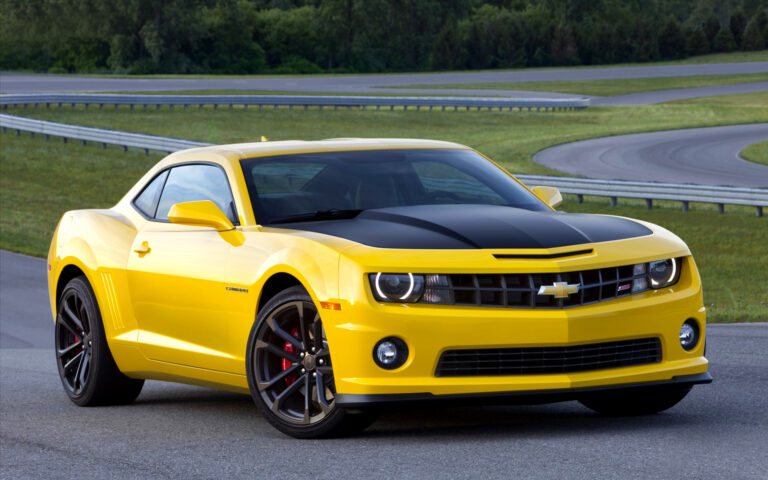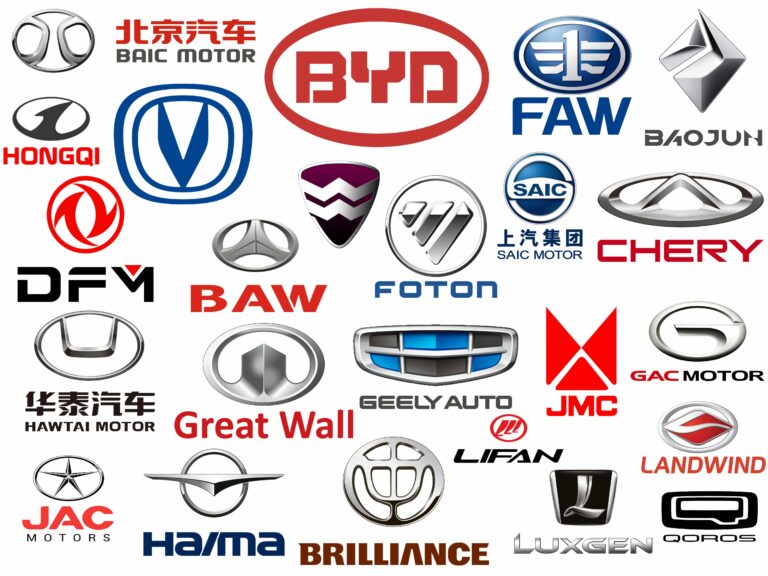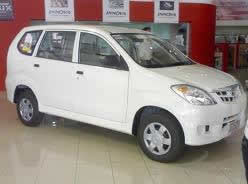Car Brands Around The World: A Global Odyssey of Innovation, Culture, and Design
Car Brands Around The World: A Global Odyssey of Innovation, Culture, and Design cars.truckstrend.com
The automotive industry is a vibrant tapestry woven from threads of engineering prowess, cultural identity, economic might, and groundbreaking innovation. From the bustling streets of Tokyo to the autobahns of Germany, and the sprawling highways of America, car brands around the world represent far more than just modes of transportation. They embody national pride, historical legacies, and a relentless pursuit of mobility, luxury, and performance. Understanding the global landscape of car brands is to appreciate the diverse philosophies that shape our driving experiences, the technological leaps that define eras, and the competitive spirit that continuously pushes boundaries. This article serves as a comprehensive guide to the multifaceted world of automotive brands, exploring their origins, unique characteristics, the trends that shape them, and practical advice for navigating this dynamic global market.
The Automotive Powerhouses: A Regional Overview
Car Brands Around The World: A Global Odyssey of Innovation, Culture, and Design
The global automotive industry is dominated by a few key regions, each with a distinct approach to vehicle manufacturing and design.
Asia: The Epicenter of Efficiency and Emerging Innovation
Asian car brands, particularly those from Japan, South Korea, and increasingly China, have carved out a formidable presence globally.
- Japan: Renowned for reliability, efficiency, and advanced hybrid technology. Brands like Toyota (the world’s largest automaker by volume, known for Camry, Corolla, RAV4, and its luxury arm Lexus), Honda (Accord, Civic, CR-V, with its luxury division Acura), and Nissan (Altima, Rogue, Infiniti luxury brand) have long set benchmarks for quality and practical innovation. Subaru is celebrated for its all-wheel-drive systems, while Mazda focuses on driving dynamics and unique design.
- South Korea: Hyundai and its sister company Kia have rapidly ascended, offering stylish designs, competitive pricing, and increasingly sophisticated technology, especially in electric vehicles. Their Genesis luxury brand is also making significant inroads.
- China: The world’s largest automotive market and a burgeoning manufacturing hub. Brands like Geely (which owns Volvo and Lotus), BYD (a global leader in electric vehicles), and Great Wall Motors are rapidly expanding their influence, focusing heavily on electrification, smart technology, and catering to a massive domestic market before looking outward. New players like Nio, Xpeng, and Li Auto are at the forefront of the EV revolution.

Europe: The Cradle of Luxury, Performance, and Engineering Excellence
European brands are synonymous with precision engineering, opulent luxury, thrilling performance, and distinctive design.
- Germany: The home of automotive titans. Mercedes-Benz (luxury, innovation), BMW (driving dynamics, sportiness), Audi (sophistication, Quattro AWD), and Volkswagen (the "people’s car," encompassing a vast portfolio including Skoda, Seat, Porsche, Lamborghini, and Bentley) lead the charge. Porsche stands alone for its iconic sports cars and SUVs.
- Italy: Synonymous with passion, style, and high performance. Ferrari and Lamborghini are the pinnacle of supercar artistry. Alfa Romeo offers sporty elegance, while Fiat (part of Stellantis) traditionally focused on compact and city cars.
- France: Known for unique design and comfort. Renault and Peugeot (both part of Stellantis, along with Citroën and DS Automobiles) offer a blend of practicality and distinctive styling.
- United Kingdom: A rich heritage in luxury and performance. Land Rover and Jaguar (both owned by Tata Motors of India) offer rugged luxury SUVs and refined sedans. Rolls-Royce and Bentley represent the ultimate in automotive extravagance. Volvo (now owned by Geely) from Sweden, is globally recognized for its pioneering safety features and minimalist Scandinavian design.

North America: The Land of Trucks, Muscle, and Electric Pioneers
American brands traditionally dominate the truck and SUV segments, while also leading the charge in electric vehicle innovation.

- United States: Ford (F-Series trucks, Mustang, Bronco) and General Motors (Chevrolet, Cadillac, GMC, Buick) are legacy automakers with immense global reach, especially in trucks and SUVs. Tesla has revolutionized the industry, becoming the undisputed leader in electric vehicles, forcing traditional manufacturers to accelerate their EV plans. New players like Rivian and Lucid are challenging Tesla in niche EV markets.
Emerging Markets: New Horizons
Countries like India are also home to significant automotive players. Tata Motors (owners of Jaguar Land Rover) and Mahindra & Mahindra are major forces in their domestic markets, producing a range of vehicles from affordable cars to SUVs and commercial vehicles, with increasing global aspirations.
Decoding Brand Identity: What Makes a Car Brand Unique?
Beyond their country of origin, car brands differentiate themselves through a unique blend of attributes that define their identity and appeal to specific consumer segments.
- Heritage and Legacy: A brand’s history often dictates its current perception. Ferrari’s racing pedigree, Mercedes-Benz’s century of engineering innovation, or Ford’s role in mass production, all contribute to their distinct identities.
- Design Philosophy: Each brand has a signature aesthetic. Volvo’s minimalist, safety-focused lines contrast sharply with the aggressive, sculpted forms of a Lamborghini, or the understated elegance of an Audi.
- Technological Innovation: Brands become known for specific technological strengths. Toyota for hybrids, Tesla for cutting-edge EV technology and software, Subaru for symmetrical all-wheel drive, or Mercedes-Benz for pioneering safety systems.
- Target Audience and Market Positioning: Brands strategically position themselves. Some aim for the mass market with affordability and practicality (e.g., Kia, Hyundai, Volkswagen), while others target the premium or luxury segments (e.g., BMW, Lexus, Porsche), or niche markets like high-performance sports cars.
- Brand Values: These are the core principles that guide a brand. Reliability (Toyota), safety (Volvo), sustainability (Tesla, Polestar), performance (Porsche, BMW), affordability (Dacia, some Kia models), or rugged capability (Jeep, Land Rover) are examples of values that resonate with consumers.
The Global Automotive Landscape: Trends and Challenges
The automotive industry is in a perpetual state of flux, driven by technological advancements, environmental concerns, and shifting consumer preferences.
- Electrification (EV Revolution): This is arguably the most significant trend. Almost every major car brand is investing heavily in electric vehicles, phasing out internal combustion engines. This shift brings new opportunities for range, performance, and sustainability, but also challenges in charging infrastructure, battery production, and raw material sourcing. New EV-only brands are emerging globally, challenging established players.
- Autonomous Driving: The development of self-driving technology is progressing, promising increased safety and efficiency. While fully autonomous vehicles are still some way off, advanced driver-assistance systems (ADAS) are becoming standard, enhancing convenience and safety.
- Connectivity and Software-Defined Vehicles: Modern cars are increasingly becoming connected devices, offering over-the-air updates, infotainment, and seamless integration with digital lives. The focus is shifting from hardware to software, transforming the user experience and enabling new business models.
- Supply Chain Resilience: Recent events like the semiconductor shortage highlighted the fragility of global supply chains. Automakers are now re-evaluating their sourcing strategies and building greater resilience.
- Sustainability and Environmental Regulations: Stricter emissions standards globally are accelerating the move towards electrification and the development of more eco-friendly manufacturing processes. Brands are under pressure to reduce their carbon footprint across the entire product lifecycle.
- Consolidation and Alliances: To share costs and accelerate development, automakers are forming alliances and merging (e.g., Stellantis, formed from PSA Group and Fiat Chrysler Automobiles). This leads to shared platforms and technologies across multiple brands.
Choosing Your Brand: Practical Advice for Consumers
Navigating the vast array of car brands can be daunting. Here’s practical advice to help you make an informed decision:
- Identify Your Needs and Budget: Before looking at brands, determine your primary use (commute, family, off-road, performance), desired features, and, most importantly, your realistic budget for purchase, insurance, fuel/charging, and maintenance.
- Research Reliability and Safety Ratings: Consult independent organizations like J.D. Power, Consumer Reports, Euro NCAP, and the NHTSA. These provide valuable insights into a brand’s long-term reliability and crashworthiness. Brands like Toyota, Honda, and Lexus consistently rank high in reliability.
- Consider Resale Value: Some brands and models hold their value better than others, which can significantly impact your total cost of ownership. Do some research on depreciation rates.
- Test Drive Multiple Brands/Models: Reading reviews is helpful, but nothing beats personal experience. Test drive different models from various brands to assess comfort, driving dynamics, visibility, and overall feel.
- Look at After-Sales Service and Parts Availability: Ensure that your chosen brand has a strong dealer network in your area, good customer service reputation, and readily available parts for maintenance and repairs.
- Assess Environmental Impact: If sustainability is a priority, consider fuel efficiency, hybrid options, or electric vehicles. Research a brand’s commitment to eco-friendly manufacturing.
Representative Global Car Brands by Market Segment & Price Range
Please note: Prices are approximate starting MSRPs in USD for base models and can vary significantly by region, trim level, and optional features. This table is for illustrative purposes only.
| Brand Region | Brand Name (Examples) | Market Segment | Typical Starting Price Range (Approx. USD) | Key Characteristics |
|---|---|---|---|---|
| Asia | ||||
| Japan | Toyota, Honda, Nissan | Mainstream, Reliable | $22,000 – $40,000 | Reliability, efficiency, practicality |
| Japan | Lexus, Acura, Infiniti | Premium, Luxury | $40,000 – $80,000 | Refinement, comfort, reliability |
| South Korea | Hyundai, Kia | Mainstream, Value, EV | $20,000 – $55,000 | Stylish design, good value, strong EV push |
| South Korea | Genesis | Luxury | $45,000 – $75,000 | Modern luxury, advanced tech, strong warranty |
| China | BYD, Geely (select models), Great Wall | Emerging, EV, Value | $15,000 – $45,000 | Rapid EV growth, increasing tech, value-oriented |
| China | Nio, Xpeng, Li Auto | EV Specialist, Premium | $40,000 – $80,000 | Smart tech, battery swap (Nio), premium EV features |
| Europe | ||||
| Germany | Volkswagen, Skoda, Seat | Mainstream, Practical | $25,000 – $50,000 | Solid engineering, diverse models |
| Germany | Audi, BMW, Mercedes-Benz | Premium, Luxury, Performance | $40,000 – $150,000+ | Engineering excellence, driving dynamics, luxury |
| Germany | Porsche | Performance, Luxury Sports | $60,000 – $200,000+ | Iconic sports cars, precision engineering |
| Italy | Fiat, Alfa Romeo | Mainstream, Sporty Compact | $20,000 – $55,000 | Style, character, driving fun |
| Italy | Ferrari, Lamborghini | Ultra Luxury, Supercar | $250,000 – $500,000+ | Exclusivity, extreme performance, iconic design |
| France | Renault, Peugeot, Citroën | Mainstream, Distinctive Design | $25,000 – $45,000 | Unique styling, comfort, practical solutions |
| UK | Land Rover, Jaguar | Premium SUV, Luxury Sedan | $50,000 – $150,000+ | Rugged capability (LR), refined luxury (Jag) |
| UK | Rolls-Royce, Bentley | Ultra Luxury | $350,000 – $600,000+ | Unparalleled luxury, bespoke craftsmanship |
| Sweden | Volvo | Premium, Safety, EV | $40,000 – $75,000 | Leading safety, Scandinavian design, sustainability |
| North America | ||||
| USA | Ford, Chevrolet, Ram (under Stellantis) | Mainstream, Trucks, SUVs | $25,000 – $70,000 | Dominant in trucks/SUVs, robust, performance |
| USA | Cadillac, GMC, Jeep (under Stellantis) | Premium, SUV, Off-road | $40,000 – $90,000 | American luxury, strong off-road capability (Jeep) |
| USA | Tesla | EV Specialist, Tech-focused | $40,000 – $100,000+ | EV pioneer, cutting-edge tech, software integration |
Concluding Summary
The world of car brands is a dynamic and fascinating ecosystem, reflecting global cultures, economic priorities, and technological ambitions. From the meticulous engineering of Germany to the pragmatic reliability of Japan, the audacious design of Italy, and the pioneering spirit of American electric vehicles, each brand tells a unique story. As the industry hurtles towards an electric, autonomous, and connected future, the lines between traditional automakers and tech companies continue to blur, ushering in an era of unprecedented transformation. For the consumer, this evolving landscape means more choice, more innovation, and the opportunity to select a vehicle that truly aligns with their values and lifestyle, making the journey of car ownership more personalized and exciting than ever before.
Frequently Asked Questions (FAQ)
Q1: Which country has the most car brands?
A1: While difficult to give an exact number due to constant emergence and disappearance of small brands, China currently has the largest number of active car brands, especially with the rapid growth of new electric vehicle (EV) startups.
Q2: What are the most reliable car brands globally?
A2: Brands like Toyota, Lexus (Toyota’s luxury division), and Honda consistently rank among the top for reliability in global surveys by organizations like J.D. Power and Consumer Reports. Their reputation is built on consistent quality and durability.
Q3: Are Chinese car brands catching up to established global brands?
A3: Absolutely. Chinese brands, particularly in the EV sector (e.g., BYD, Nio, Xpeng), are making significant technological advancements, improving design, and expanding their market share both domestically and internationally, challenging traditional automakers.
Q4: What’s the main difference between a luxury brand and a performance brand?
A4: Luxury brands (e.g., Rolls-Royce, Lexus) prioritize comfort, exquisite materials, advanced features, and a prestigious ownership experience. Performance brands (e.g., Porsche, Ferrari) focus on speed, handling, driving dynamics, and raw power. Many brands, like BMW and Mercedes-Benz, successfully blend elements of both.
Q5: How do new EV brands compete with established automakers?
A5: New EV brands often compete by offering cutting-edge technology, innovative software integration, unique designs, and sometimes direct-to-consumer sales models. They can be more agile in adopting new technologies and have a "clean slate" without legacy internal combustion engine infrastructure.




